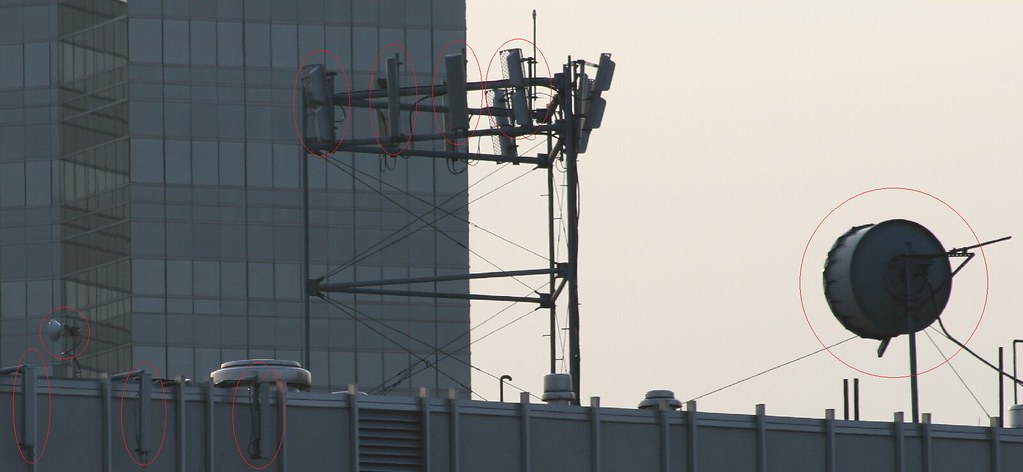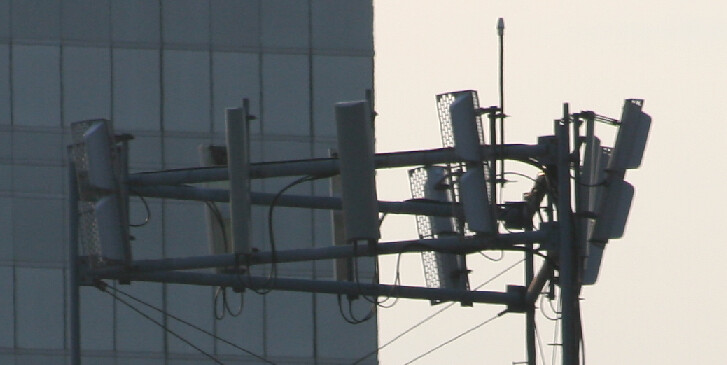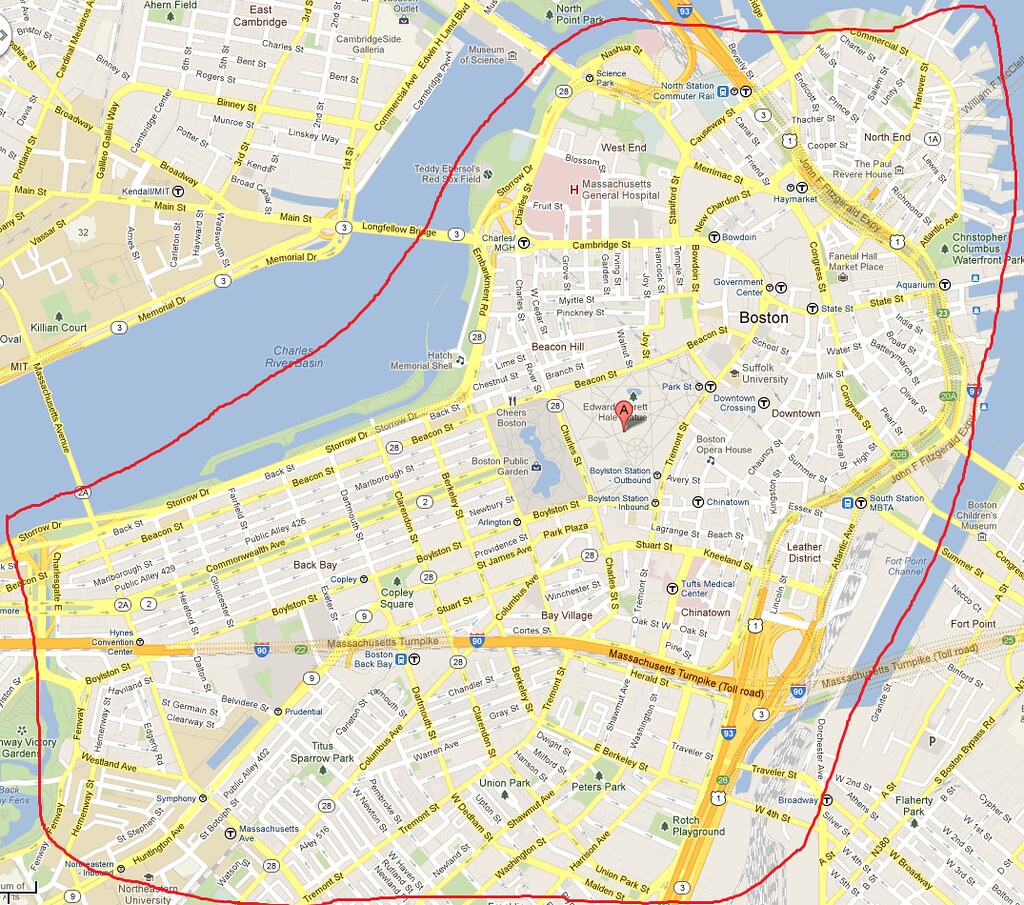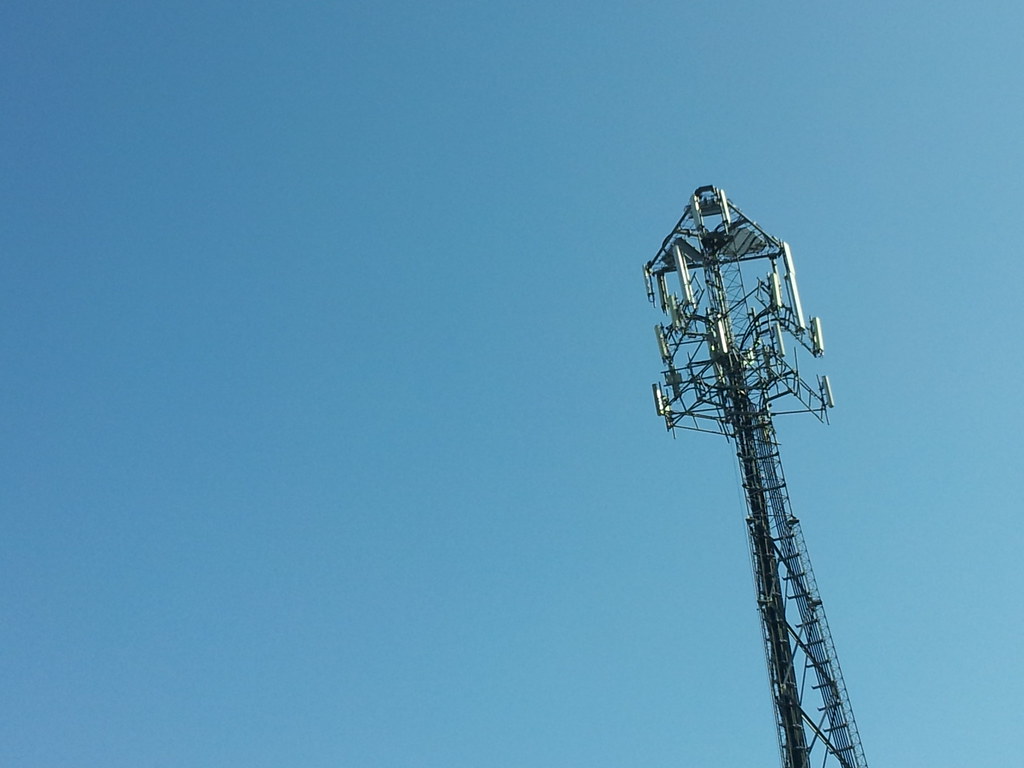-
Posts
1,501 -
Joined
-
Last visited
Content Type
Profiles
Blogs
Articles
Media Demo
Gallery
Downloads
Events
Forums
Posts posted by irev210
-
-
I believe you are correct Robert. As far as I know, the LTE agreement with Clearwire would be Sprint's first agreement that is entirely usage base. The Wimax agreements should still be on a monthly per user base even with the extensions to 2015.
I really do hope that all out of contract Sprint customers and EVO customers start jumping on Sprint LTE. There is no reason to buy a Wimax phone at this point with its limited coverage.
Not sure - Duffman's article and the WSJ both say that Sprint paid on a per meg basis. This was probably in addition to a fixed fee per device.
The dispute revolves around the wholesale agreement under which Sprint customers ride on Clearwire's network when using 4G smartphones. Sprint pays for that access by the megabyte of data transferred.
http://online.wsj.co...0568311044.html
I don't have the time to dig into it more - not a huge deal either way they did it before.
-
I have recently seen some of the Backhaul contract awards. To me it appears that the contracts for the backhaul put the entire burden on the vendor. They provide a complete package. Ethernet via AAV, Microwave, fiber...whatever. Then NV OEM's take the ethernet connection left for them at every site and connect it all up. How the vendor gets the ethernet to the site is largely up to them. I imagine each backhaul vendor will have their own microwave schemes and you will see tons of variability between vendors.
Robert
The backhaul component is very interesting. Do you have any other examples, like you provided with the Chicago rollout (like boston
 )
)I've always been curious how the backhaul vendor effects the end-user's experience and how local backhaul actually ties into the sprint network.
I would love to hear any insight on how they choose backhaul, the performance difference between vendors (say AT&T vs. Level 3, Comcast, etc).
Lastly, how often does sprint actually have their own fiber reach a base station?
-
I'm pretty sure that previous WiMax usage agreements were paid to Clearwire per handset per month, not usage based. The LTE agreement with Clearwire is the first one I am aware of between Clearwire and Sprint that is usage based.
Robert via NOVO7PALADIN Tablet using Forum Runner
Yeah, Sprint used to pay clearwire 6 bucks a handset per month. It was a big battle between clearwire and sprint on the 6 dollar fee. The relationship between Sprint and Clearwire has been pretty interesting, to say the least.
From many angles the fixed-payment system makes a lot more sense while they switch to LTE.
-
I am on the edge of my seat waiting to see who is correct....
Edit: Looks like both may be correct according to this article. Does anyone else read that Sprint appears to be paying a flat rate for phones and a usage rate for mobile broadband... much like it charges its customers?
That's from last April.
The new deal that they entered into in December 2011 turned WiMAX into a fixed payment for 2012 and 2013, then back to usage in 2014.
From:
http://corporate.clearwire.com/releasedetail.cfm?ReleaseID=629282
The agreements modify prior wholesale pricing agreements and provide Sprint with unlimited access to Clearwire's WiMAX network to meet its growing 4G data demands. Under the terms of the agreements, Sprint will pay Clearwire a total of $926 million, approximately two-thirds of which will be paid in 2012, for unlimited 4G WiMAX retail services during 2012 and 2013, subject to certain conditions. The agreements also establish long-term usage-based pricing for WiMAX services in 2014 and beyond. Sprint will have access to Clearwire's WiMAX network through at least 2015. Sprint plans to continue selling WiMAX devices with two-year contracts through at least 2012 and support those devices through the life of the contract.
-
That would mean that 25% of Sprint customers bought an EVO. I can't see that. There were a lot of people who bought the OG Epic and a lot that bought the other smartphones released around that time. If anything, I could see 7 million sales of the whole EVO line. Evo 4G, EVO 3D, EVO Shift and EVO Design combined.
yup, 7 million on the entire family is correct.
That's why the 24 million apple devices over four years doesn't seem ALL that bad. The EVO line of phones, while iconic, does not have the pull that four years of new apple products will have.
8 million i-devices a year * 4 years = 32 million
People get too caught up in the base number of subscribers that sprint has (28.7 million). Figure that they can throw in another 14.8 million of direct prepaid to sell the old iPhone 4, and convert another 3 million in postpaid iDEN into postpaid CDMA and you are at 45.5 million potential iPhone customers.
Doing the math, you essentially need about 25% of Sprint's subscriber base to be on i-devices.
-
They will start losing customers starting this weekend. Every LTE smartphone sold now will be at the loss of Clearwire. Sprint pays Clearwire now a monthly fee for every WiMax device activated. Clearwire has enjoyed a guaranteed revenue stream from Sprint with every WiMax device sold.
Now with LTE devices, WiMax device sales are going to plummet. And thus, revenues to Clearwire from these Sprint devices.
Robert - Posted from my E4GT with ICS using Forum Runner
Duffman is correct - with the current deal, usage payments are gone.
Clearwire will receive $926 million for unlimited WiMAX service from Sprint for 2012 and 2013. $600 of that $926 million will be paid in 2012.
This is one of the reasons why Sprint is probably eager to discount wimax devices - they want as many people on wimax as possible right now - it offloads traffic at no additional cost.
The agreement goes back to the usage-based model in 2014 and Sprint has access to WiMAX through 2015 under the deal.
If you take a step back and look at the way the deal was made, it makes a lot of sense. They needed a fixed-payment stream to cover costs while Sprint switches to LTE and that's exactly what the agreement does.
By the end of 2013 and Sprint switches to LTE advanced and there are handsets out there that support Sprint's FD-LTE and Clearwire's TD-LTE, we go back to the usage-based model we saw before.
-
That may be as my memory sucks.
I will look for the article. It was something about this being a followup to the Evo 4G, "of which 7 million were sold.
But I think you are probably right as Sprint has what, 50 million subs? I doubt 7 mil, or 14%, got the Evo 4G.
At the end of 2011, Sprint had about 28.7 million postpaid subs, 4.3 million postpaid iDEN, and 14.8 million direct prepaid subs.
So it would be off 28.7 million.
Still, 7 million total HTC EVO devices on a base of 28.7 is mighty impressive.
-
 1
1
-
-
San Fran is psychoville to me. They complain about everything, and don't deserve anything as a result.
Yes, with websites like this:
http://www.antennafreeunion.org
That's beyond psycoville.
-
I live next to a cell site, and have yet to notice one affect of it. And my site is 270' tall. But my neighborhood fought it too. NIMBY-assed people.
Ironically, the people who fight the hardest typically have smartphones. They seem to be pissed at their carriers about coverage, but want the tower somewhere else. To be a nuisance to a different set of NIMBYs.
Robert via NOVO7PALADIN Tablet using Forum Runner
The worst is San Francisco. People complain all the time about slow data speeds in San Fran but try to build a tower and you get people wearing tin hats protesting.
Remember, San Fran wanted to make cellphone manufacturers post SAR readings when you bought a phone - strange.
-
Just read an article that said Sprint sold 7,000,000 Evo 4Gs.
That's somewhat misleading.
The "EVO Family" has sold 7 million.
EVO Family includes:
EVO 4G
EVO Shift 4G
EVO 3D
EVO View 4G Tablet
EVO Design 4G
-
It's just sad because since you can't prove a negative people just fight against it.
The new mentality is "well I have cell coverage now, therefore there is no benefit but added risk".
So they just shoot it down.
-
Work has been suspended on a cellphone tower at Copper Ridge School while the Scottsdale Unified School District addresses health concerns raised by parents.
The governing board approved a contract with Sprint Nextel last June to allow cell towers at Copper Ridge School and Desert Mountain High School. Sprint will pay the district $1,200 a month.
Marv Wessel, CEO of Global RF Solutions, a firm that Sprint pays to conduct site studies, told parents that people are subjected to more energy from a hand-held cellphone than a cell tower. But several parents pointed out that their young children do not carry cellphones.
Too bad - seems like Arizona needs a lot of help in terms of increased capacity.
-
This was happening today - not sure what they were doing:


-
 1
1
-
-
Thanks for the compliments on the picture. I've got lots more of various antennas in my area which I will post soon... you can even read the brand labels on the antennae in some of them! All taken with a Nikon D5100 and 55-300 Nikkor lens.
How about this one: does anyone know what the funky little antennas with the gold and silver plates around them are? They're only on two sectors of the tower; the sector with the long antennas angled downward is shooting off the side of a bluff.
Also, that big dish with the lighting bolt logo seems to be where many of the smaller Clear WiMax sites are backhauling to.
Based on the maps in the sponsors section, and my abysmal Sprint coverage near it, I'm certain this isn't a Sprint tower. I get a great LTE signal on my Verizon iPad, though.
Pretty sure that's verizon stuff. They installed the same things on my local verizon tower. I thought the mesh was filtering.

Below, attached to the building is clearwire.

This is as close as I can get - you can see they are the exact same thing.
-
over at anandtech they have confirmed the codec that is being used:
http://www.anandtech.com/show/5726/sprint-hd-voice-on-htc-evo-4g-lte-is-evrcnw-1x-advanced
For the HTC EVO 4G LTE, HD Voice consists of one part common mode noise rejection using two microphones (something we've seen ship on high-end smartphones for a while now), and one part 1x-Advanced.
I reached out to Qualcomm and asked what voice codec was being used in conjunction with Sprint's HD Voice branding on the HTC EVO 4G LTE, and learned that EVRC-NW (Service Option 73) is being used. EVRC-NW (Narrowband-Wideband), as the name suggests, includes both the EVRC-B rates with narrowband 8 KHz sampling, and EVRC-WB rates with 16 KHz sampling all under one umbrella.
-
I never knew this app existed. Thank you!
rootmetrics app is really good - very consistent results.
-
 1
1
-
-
After reading that the Lumia 900 supports 10 bands and has 7 cellular antennas... my mind is officially blown.
From BGR:
The Lumia 900 features compatibility with 10 different cellular bands — GSM 850/900/1800/1900, WCDMA 850/900/1900 and LTE 700/1700/2100.
From anandtech:
http://images.anandtech.com/doci/5724/Screen%20Shot%202012-04-02%20at%202.59.15%20PM.png
After seeing this, a sprint phone with CDMA 800/850/1900 and LTE 700/800/1900/2500 doesn't seem all that crazy.
Am I the only one that was pretty impressed with this? With the 28nm qualcomm baseband that supports everything under the sun it doesn't seem far fetched to see a fully loaded sprint phone that actually has all of the needed antennas to support roaming on Verizon's 700MHz and 850MHz + sprint's native 800/1900 and Clearwire's 2.5.
-
 1
1
-
-
@JeffDTD Thanks for the insight!
I wish Sprint and other companies would have 2 different customer service numbers. 1 for people that want to talk to a person, rather than go through a "press 1 for technical support, press 2 for device support" another for people who would gladly press a few numbers and wait longer to talk to someone in exchange for being connected to someone who is at least in the right department and hopefully has experience with the same problem.
I just call that special sprint number that someone picks up right away. I RARELY call and when I do it is because I am having a particularly bad issue.
Last time I called it was because a jerk store employee refused to sell me a epic 4g touch without adding a line (he wanted his $$$ from opening a new line). Had to report him. He totally lied to me saying he was not able to sell me a phone off contract - really ticked me off.
-
I am willing to zoom in any specific site and send you a map of any complete site. Also, over in our Sponsor section, we have NV Complete Sites interactive map and Sprint market maps what show every single site. You can get access to those by becoming a sponsor.
Robert
Awesome! I really wish I could become a sponser but that's something I can't swing
 I really wish I could
I really wish I could 
Here is Boston!

-
The MetroPCS deal would have been more about an increased spectrum in the larger cities, additional prepaid customers would not have helped much. I think Dan Hesse was thinking that they could easily expand to another LTE carrier in the large cities if they could offload some voice traffic to Metro's airwaves. Yes, it wasn't a good deal and it wasn't something they could afford now, but I believe that was the reason they tried.
I think it was the other way around. Sprint was not going to deploy AWS-capable phones because of the small amount of spectrum that PCS has.
It's the other way around. PCS would fit VERY well into the Boost/Virgin prepaid lineup that Sprint has. All of Metro's phones already work flawlessly on Sprint's 3G network. 10 million prepaid subs, sell off the spectrum to AT&T or Verizon, win/win/win.
The only problem was that Sprint's stock price fell too much for the deal to financially make sense to Sprint.
-
I would love to see where the towers are located around downtown boston so i can keep an eye out for network vision improvements.
I drove out to the burbs looking for NV towers based on Robert's maps but had no luck finding any.
Looks like they were ready to work on this one:

-
This is good, people should be prompted to connect to home wifi "for improved battery performance and device speed"
The wimax offload I am not a big fan of.
-
eHRPD is just the EVDO carrier routed through the eNodeB's IP interface (the LTE gateway and the traditional EVDO HA Gateway are different). The handoff won't be totally "seamless", your handset would change IP addresses between Sprint's and Clearwire's networks in a similar way the WiFi to 3G/4G handoff works today. The gateways and IP networks are totally separate and would have to remain so. It's just to clarify the "aggregation" term everyone keeps using-- by its own definition, that isn't possible between two separate networks, though you could possibly switch between them. It's an "or" versus an "and" situation.
OK, thanks for the clarification. I was hoping for a seemless handoff, which after you explained it doesn't seem possible. Sad to hear.
I am curious what sort of speeds Clearwire is going to be able to accomplish with TD-LTE.
-
If you had a device that would work with Clear's 2.5 GHz LTE and Sprint's LTE, you could still switch back and forth between them -- essentially roaming on Clear's network, but you could never use both networks to provide a greater bandwidth. LTE-Advanced aggregation works like EVDO Rev. B or MC-- it combines numerous carriers using them all simultaneously for greater bandwidth-- but this will not work if the data is coming through two different subnets since your phone can't have a split personality. You'd still be able to use one OR the other but NOT both at the same time-- so aggregation can't work, but their network could augment Sprint's so you could use either one; however, I doubt you'll ever see a tri-band LTE device until it no longer has to support CDMA at all-- the radio electronics and antenna requirements would be too much.
Yeah, I assumed that if you were on Clearwire's network aggregating Sprint's network wouldn't add much.
Clearwire has talked about aggregating its own bandwith (20MHz + 20MHz for example) which makes sense. Speedwise, nothing on the market should be faster. Doesn't sound like aggregating Sprint spectrum with Clearwire spectrum would add much value (and it doesn't seem possible anyway).
I guess my question is more about the handoffs between Sprint's FD-LTE network and Clearwire's TD-LTE network. The whole point (from what I understand) of LTE-Advanced is the seemless handoff between various spectrums. Maybe I am still not getting it. I am really curious how the hand-off between Sprint and Clearwire will work using LTE-Advanced. eHRPD-Advanced? heh




LTE / TD-LTE Compatibility
in Network, Network Vision/LTE Deployment
Posted · Edited by irev210
I posted about the Nokia Lumina 900 and it seems to prove that you can stuff a TON of bands inside a phone.
It seems like the number of bands isn't that big of an issue. Not sure how they do it, or how many antennas it has (looks like two... but not sure).
Any insight?
GSM 850/900/1800/1900, WCDMA 850/900/1900 and LTE 700/1700/2100.